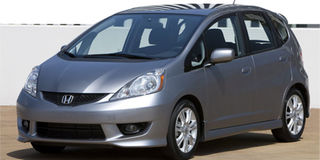Ask the Mechanic

Is the 2014 Honda Fit a good car?
Hello Paul, I have read much glowing tribute to the new generation Honda Fit (2014) hybrid. Please review its performance from a Ugandan perspective given our roads (ground clearance), dust (reliability), and maintenance? Is there a competent garage to look after hybrid cars and supply genuine parts?
Marx
Hello Marx, the 2014 Honda Fit (Jazz) has mixed fortunes. The Fit has a cheeky but attractive sporty exterior with aerodynamic lines and sharp curves. Its good ground clearance is enough to traverse the bumpy or pot-holed roads during the daily commute. The interior is designed with a modern appeal, spacious seating space (even for taller people) with practical Swiss jackknife magic seats which give way to create more storage space. The seats are stiff and can be uncomfortable during long journeys.
The Hybrid Honda Fit comes with the 1.3 or 1.5 litre internal combustion petrol engines which are intermittently switched off when a battery powered motor drives the car. How long you drive on the electric motor depends on how aggressive you drive or how much power you need during manoeuvres.
For instance, when driving uphill, overtaking or accelerating, the car runs on the petrol powered internal combustion engine. When cruising on a straight stretch or coasting downhill, the battery-powered motor takes over. The combined Hybrid and drive train will give you a higher output of 103 KW and a fuel economy of 37km/litre.
In comparison, the non-Hybrid Fit with 1.3L engine gives a fuel economy of 25km/l and power output of 73KW while the 1.5L fuel economy is 22km/l and output of 97 KW. The fuel economy statistics largely depend on how much you put the accelerator pedal to the floor. Braking regenerates the battery, which gives you more use of the electric motor.
Most of the 2014 Honda Fit’s user reservations seem to be more technical or about reliability than aesthetic. On the Ugandan market, the biggest challenge with the Honda Fit would be where to promptly get spare parts to replace faulty ones. The electric fuel pump has a reputation for failing suddenly between 80,000-100000kms. In the event that the used Hybrid battery fails, you may not be able to get it locally. A new replacement battery is prohibitively expensive.
There is a frequent failure of the Takata airbag system and TRW crash sensors. This can be a nagging problem as it concerns safety of the car. The tyre pressure monitoring sensors sometimes prematurely fail while the wire harnesses designed with soy insulation can attract rodent damage.
The 2014 Fit gearbox computer was recalled for software updates as it would abruptly stop gear shifts or engagement. The CVT gearbox requires special CVT fluid. If you use the wrong gearbox fluid, the CVT gearbox will fail. However, this is more of a maintenance challenge.
If you are lucky to buy a used Honda Fit, which has had the above service fixes done, then you should be fine. If not, carry out precautionary service actions to avoid a bumpy and costly ride.

Which is better between Toyota Premio and Fielder?
Hello Paul, I would like to buy a car and I am torn between Toyota Premio and Toyota Fielder. Please advise.
Egimu
Hello Egimu, choosing between the pre-used Toyota Premio and Toyota Corolla Fielder will largely be guided by your lifestyle and passenger/cargo profile. The Premio and Fielder cannot be compared like ‘apples for apples’, the former is a compact saloon car, while the latter is a wagon. However, they strike a similar chord with shared engines (performance and fuel economy) and similar comfort features.
There are two popular generations of used Premio and Fielder Toyota cars to choose from. The ageing, plain but more affordable 2001 or the refreshed better looking, more comfortable and fuel efficient 2007 models. The Premio’s compact saloon and closed boot design makes it suitable for passengers who prefer more comfortable seating space than luggage space.
The Premio is not too big, yet it is not as small as the Corolla. Its profile appeals to the youthful person with a young family or friends and a middle aged person looking for a fine mix of comfort, economy and reliability.
On the other hand, the Toyota Corolla Fielder is more versatile and practical. Its wagon design gives it good passenger and cargo options.
The Fielder can comfortably carry five passengers and substantially more cargo volume than the Premio. The middle row seats can be folded to create much more room for cargo. Fielder, like its name, appeals to a practical person because it is good for shopping, airport drop offs, light duty or cargo delivery and family road trips. The comfort features and amenities are the same for both options across the two popular generations.

The Premio and Fielder share the same engines across the two generations 2001 and 2007. The most popular engine is the 1.8 litre petrol (2001 -1ZZFE / 2007 2ZRFE). This engine provides a good balance between performance and fuel economy. The 2007 second generation provides better engine power (138 hp vs 130hp) and superior fuel economy (18 KM/L vs 16 KM/L) thanks to the dual VVTi engine valve train and smart CVT gearbox. Maintenance is easy because the parts are readily available on our local market. Resale value is excellent for both generations of the Premio and Fielder.




